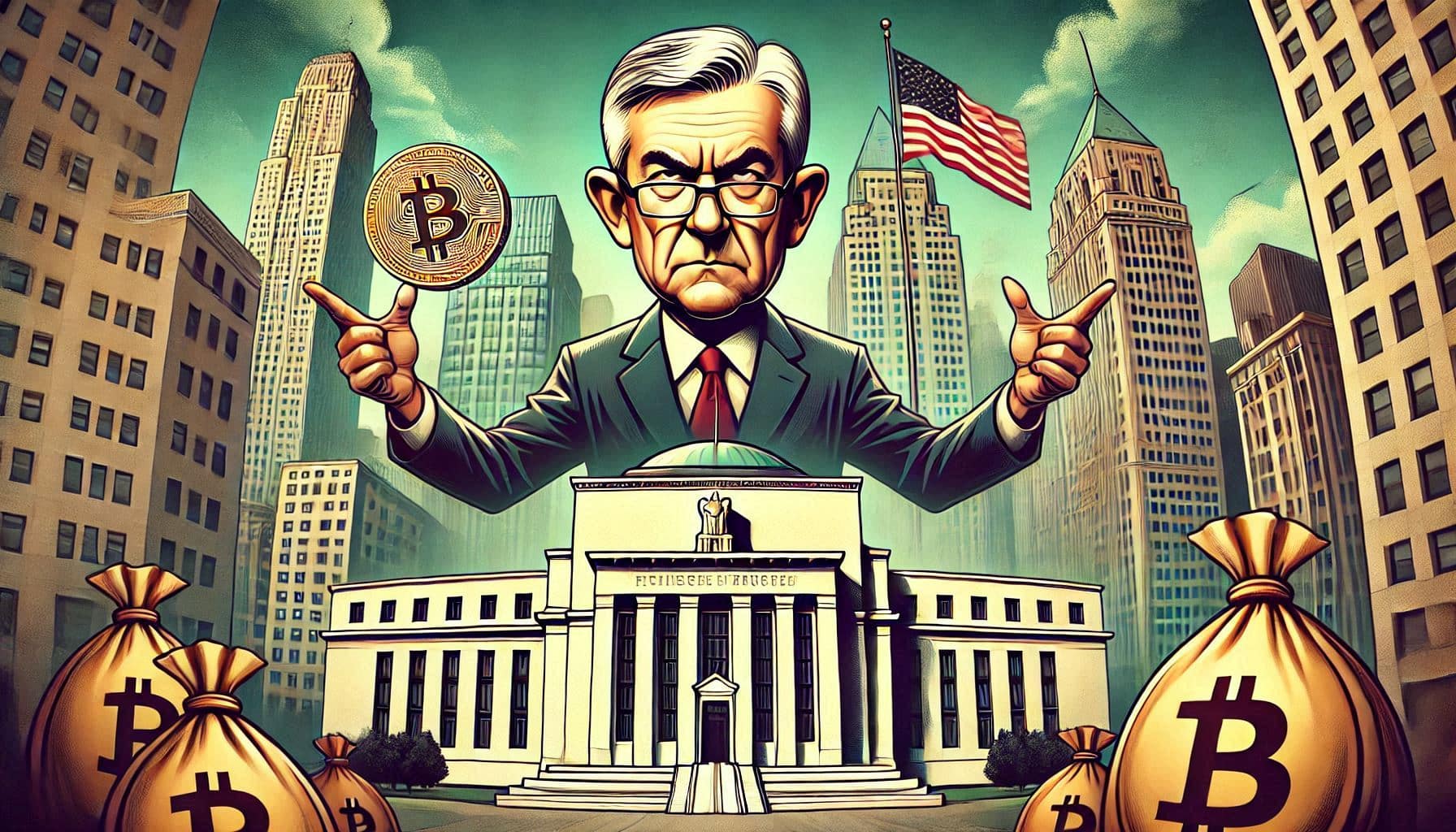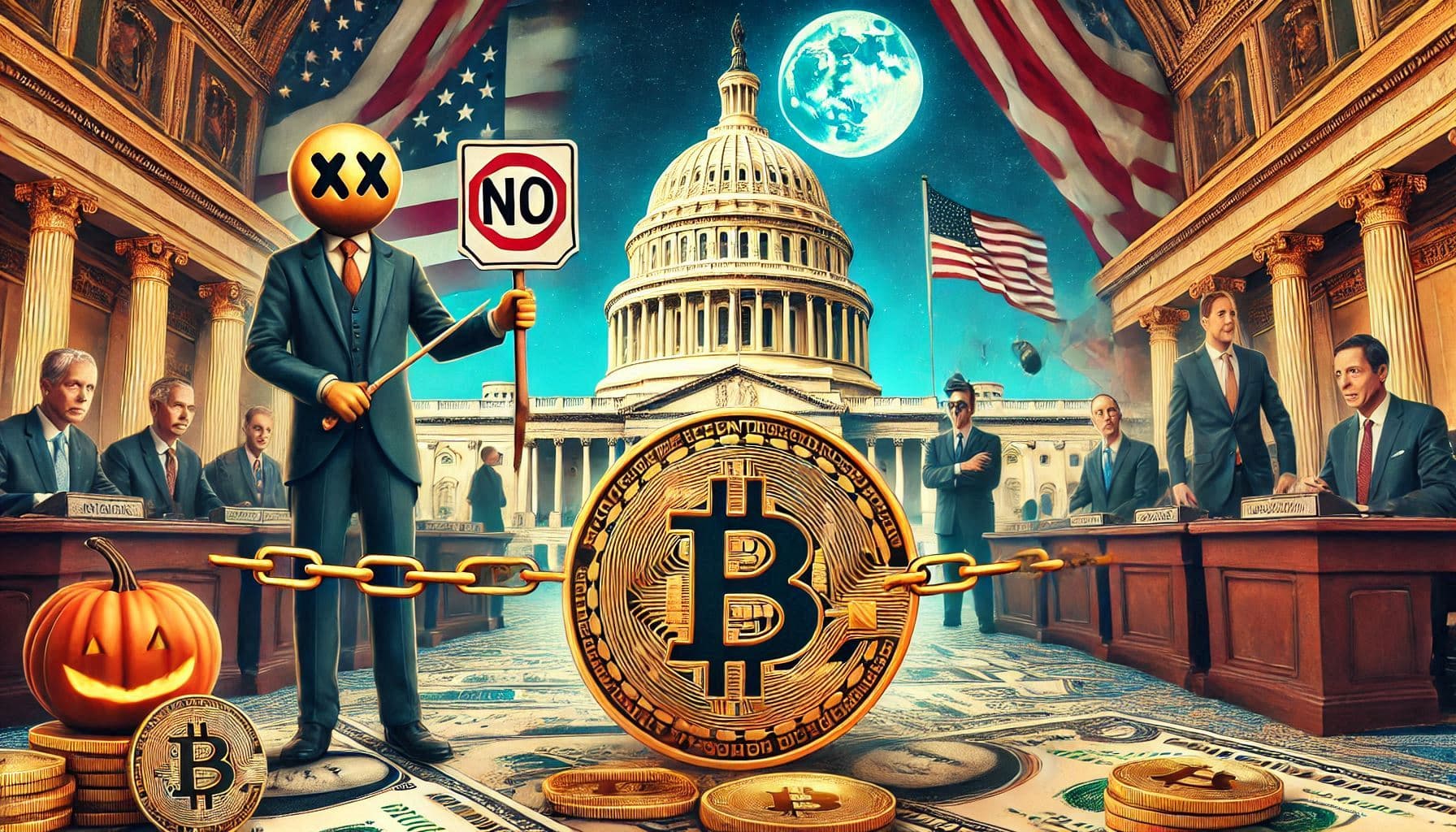The Fed hasn’t changed its tune on Bitcoin, with Chairman Jerome Powell recently stating that the institution is legally prohibited and doesn’t like cryptocurrencies. During a press conference on Wednesday, Powell addressed the idea of the Fed holding Bitcoin Reserve assets – a popular notion in political and financial circles. His answer was as simple as day and night:
“We’re not allowed to own Bitcoin. The Federal Reserve Act says what we can own, and we’re not looking for a law change. That’s the kind of thing for Congress to consider but we are not looking for a law change at the Fed.“

 This just means the Fed has to follow the rules in the Federal Reserve Act that limit its asset holdings to US government bonds and other very safe assets. Powell’s comments come at a time when the US crypto landscape is undergoing big changes with new proposals, market volatility and shifting government policies.
This just means the Fed has to follow the rules in the Federal Reserve Act that limit its asset holdings to US government bonds and other very safe assets. Powell’s comments come at a time when the US crypto landscape is undergoing big changes with new proposals, market volatility and shifting government policies.
Legal Constraints and Historical Position
The Federal Reserve Act stipulates the types of assets that can be carried on a balance sheet, concentrating on financial stability and safety. Such assets as Bitcoins, for example, are excluded from such holdings on the grounds of being speculative assets in a regulatory void. He accordingly added that Bitcoin does not constitute a method of exchange because it, in all respects, is a speculative digital asset, the volatility of which negates its function as a store of value.
In 2021, he said:
“Cryptocurrencies are not really a store of value and are not backed by anything physical. Their volatility poses big risks to the financial system and investors.”
This only has guided the cautious direction by which the Fed is currently proceeding. Such stands in contrast to the worldwide emergence of integrating digital currencies into mainstream financial systems.
Legislative Efforts to Include Bitcoin in the US Financial System
But on the other hand, amendments to some bills are in the pipeline with the expressed intention of bringing Bitcoin into the US financial system, notwithstanding the opinion of the Fed. Senator Cynthia Lummis, who is very pro-crypto, came up with the Bitcoin Act to include Bitcoin in the national reserves. These proposals are being met with strong resistance because of cryptocurrencies being used for illegal transactions and lack of oversight.


Trump’s announcement regarding the establishment of a national Bitcoin reserve has sparked much debate on including Bitcoin into government reserves. The plan will position the US as the world leader in the utilization and innovation of cryptocurrency.
The government will also reportedly buy a lot of Bitcoin as part of the plan, using assets seized from criminals as a starting point. Trump’s appointment of David Sacks as White House AI and crypto czar was seen as a move to bring digital assets into national economic policy.
Market Impact and Investor Sentiment
The national Bitcoin reserve has already affected the market. After Trump’s announcement, Bitcoin went past $100,000. Investors are hopeful for regulatory clarity and government approval.
According to market watchers, this could be a new era for cryptocurrencies – institutional adoption and mainstream acceptance. But Powell’s comments showed how far the Fed is from the broader crypto market.
Central Bank Digital Currencies: Where They Fit
Although the Fed is opposed to holding a Bitcoin reserve, it’s more open to Central Bank Digital Currencies or CBDCs. Powell called CBDCs as a safer and more regulated option compared to decentralized cryptocurrencies.


CBDCs are going to exist within the existing financial system, offering benefits with digital transactions but without the volatility and security risks associated with cryptocurrencies like BTC; for CBDCs, Fed research is part of the effort to modernize the financial system while being stable and overseen.
Conclusion
The Fed’s decision to exclude Bitcoin from its reserves shows its cautious approach to cryptocurrency. While legal and regulatory hurdles are big obstacles, the US crypto landscape is moving fast. Legislative proposals, market forces and government initiatives will shape the future of digital assets in the country.
While the debate on Bitcoin in national reserves continues, the Fed is focused on financial stability, safe investments and studying controlled innovations like CBDCs. This cautious approach highlights the challenges of integrating decentralized assets into traditional financial systems and brings forth balanced policies and regulations.
The BIT Journal is available around the clock, providing you with updated information about the state of the crypto world. Follow us on Twitter and LinkedIn, and join our Telegram channel.
FAQ
- Why can’t the Federal Reserve hold Bitcoin as a reserve asset?
Under the Federal Reserve Act, the Fed can invest only in US government bonds and similar assets. Bitcoin will be considered as a decentralized speculative cryptocurrency and does not fall into any of those groups.
- What does the Fed think about Bitcoin or any other associated cryptocurrencies?
BTC is just another speculative asset with extra volatility, according to the Fed, so it won’t be called an appropriate store of value or medium of exchange.
- How did President-elect Donald Trump’s Bitcoin reserve proposal affect the market?
Trump’s proposal to create a national Bitcoin reserve was itself sufficient to swing unchecked optimism in capital markets, providing an upside for the audience. He also coiled in investor expectations for future regulatory clarity beyond the $100,000 mark.
- What are Central Bank Digital Currencies (CBDCs) and how is it different from Bitcoin?
CBDC is an official legal tender that has a digital form issued by the central banks. On the other hand, Bitcoin is decentralized and relies on a blockchain-based image. CBDCs are centralized and designed to work within existing financial systems and provide stability with regulation.











